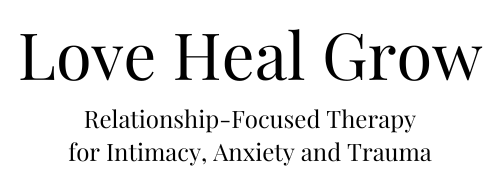
When you imagine seeing a therapist, what do you think happens? For many people, especially folks who have never visited a mental health professional before, there is a very stereotypical image. You know the one: big leather couch, lying back and talking while a concerned therapist scribbles down notes and tries to make an analysis. Therapy doesn’t exactly work like that! While talk therapy is a very helpful modality for some people, it’s only one of many ways that therapy can happen for you.
Today, we’re going to talk about EMDR therapy, or Eye Movement Desensitization and Reprocessing therapy. It’s a type of therapy that can be very helpful for people who want to process trauma.
What Is EMDR Therapy?
EMDR therapy is a psychotherapy approach developed by Francine Shapiro in the late 1980s. Originally, this type of therapy was developed to help individuals suffering from trauma, particularly PTSD. EMDR is recognized as an effective and evidence-based treatment for trauma-related conditions, and is designed to alleviate the distressing symptoms associated with traumatic experiences and facilitate emotional healing.
EMDR therapy is based on the premise that traumatic memories are inadequately processed by the brain and can become “stuck” or “frozen” in their original, distressing form. These unprocessed memories can lead to the development of PTSD symptoms, including flashbacks, nightmares, anxiety, and emotional reactivity. The goal of this type of therapy is to help you reprocess these memories in a more adaptive and less distressing way.
The therapy’s name highlights one of its key components: the use of bilateral stimulation, which typically involves your therapist directing your eye movements or providing other forms of bilateral sensory input, such as tactile or auditory cues. The bilateral stimulation is thought to mimic the natural processing that occurs during Rapid Eye Movement (REM) sleep, where the brain reorganizes and integrates experiences. Through the EMDR process, traumatic memories are believed to be unlocked and then reprocessed, leading to symptom relief and a more adaptive understanding of the traumatic event.
How Does EMDR Therapy Work?
When you and your therapist decide to try EMDR therapy, there are a series of steps that you’ll take together. Here’s what that looks like:
History-Taking: First, your therapist will talk with you about your history. Together, you will identify the specific traumatic memories or disturbing events that need to be targeted.
Preparation: As you prepare, your therapist will go over the process with you and help you with some relaxation techniques. It is important that they build trust with you, too, since EMDR won’t work if you don’t trust your therapist.
Assessment: During this stage, your therapist will help you identify negative beliefs and emotions related to the traumatic memory and the desired positive beliefs to replace them. For example, you might have feelings of being endangered that you may want to replace with the thought “I am safe.”
Desensitization: During this phase, you focus on the traumatic memory while simultaneously experiencing bilateral stimulation. This process facilitates the reprocessing of the memory and the associated emotions.
Installation: At this point, you and your therapist will work together on strengthening your positive beliefs. Your therapist will help you integrate these beliefs into your self-image.
Body Scan: Don’t worry, this isn’t like a medical scan! Before you finish your session, you and your therapist will check for remaining physical tension or discomfort related to the traumatic memory. Your therapist will ask you about your physical feelings and help you discover where you’re still holding tension in your body.
Closure: At the end of your session, your therapist will make sure you’re feeling stable and help you with coping strategies.
Reevaluation: As your therapy continues, you and your therapist will review your progress and address any residual symptoms or disturbances.
When Is EMDR Therapy Used?
EMDR is primarily used to address trauma-related conditions, but it can also be used for a broad range of other mental health issues. EMDR is often a good choice when individuals are struggling with symptoms associated with distressing experiences that are negatively impacting their daily lives. Here are key scenarios in which EMDR is commonly used.
Post-Traumatic Stress Disorder
EMDR is most well-known for its effectiveness in treating PTSD. It is used when individuals have experienced traumatic events such as combat, sexual assault, accidents, or natural disasters and are suffering from symptoms like flashbacks, nightmares, hypervigilance, and emotional reactivity.
Trauma and Abuse
EMDR is employed for individuals who have experienced various forms of trauma, including childhood abuse, neglect, domestic violence, or emotional trauma. These experiences can result in long-lasting psychological distress, and EMDR helps process these memories to reduce their impact.
Anxiety Disorders
EMDR has been adapted for treating anxiety disorders, such as phobias and social anxiety. It is used when the anxiety is rooted in specific traumatic events or experiences. By reprocessing these events, clients often experience a reduction in anxiety symptoms.
Depression
EMDR can be used as part of treatment for depression, especially when there is a history of trauma or adverse life events contributing to the depression. By addressing these underlying issues, it can help alleviate depressive symptoms.
Substance Use Disorder
EMDR is occasionally integrated into substance use disorder treatment, particularly when addiction is seen as a way to cope with unresolved trauma. By addressing the trauma, it can help individuals in recovery manage triggers and cravings more effectively.
Panic Disorders
EMDR is often used when panic attacks are linked to past traumatic experiences. By reprocessing the underlying trauma, it can reduce the frequency and intensity of panic attacks.
Grief and Loss
EMDR can help individuals process grief and loss, particularly when the loss is sudden, violent, or associated with traumatic circumstances. It can assist in reducing the distressing symptoms of complicated grief.
Self-Esteem and Self-Worth Issues
EMDR can be useful when individuals have low self-esteem or self-worth due to past experiences such as bullying, emotional abuse, or critical relationships. It can help reframe negative beliefs about oneself.
Phobias and Fears
EMDR can be used to address specific phobias when there is a history of trauma or distressing experiences connected to the object or situation of the phobia.
As you can see, EMDR can be used in a wide range of clinical situations where distressing or traumatic memories are contributing to mental health issues. Its adaptability and effectiveness in treating trauma-related conditions have made it a valuable tool for therapists and has helped many people process and heal from past experiences that continue to impact their lives. If you think that EMDR therapy could help you, don’t hesitate to reach out to the therapy team at Love Heal Grow. Several of our therapists are experienced with this technique and may be able to help you with your trauma-related mental health concerns.
























